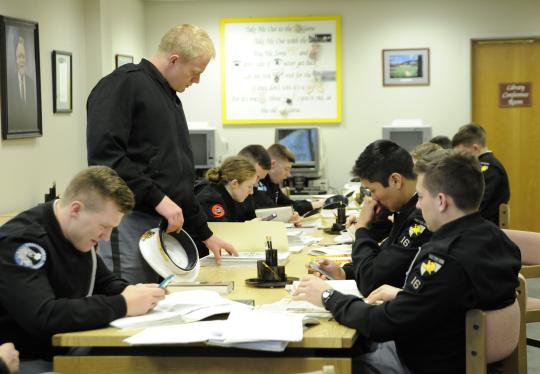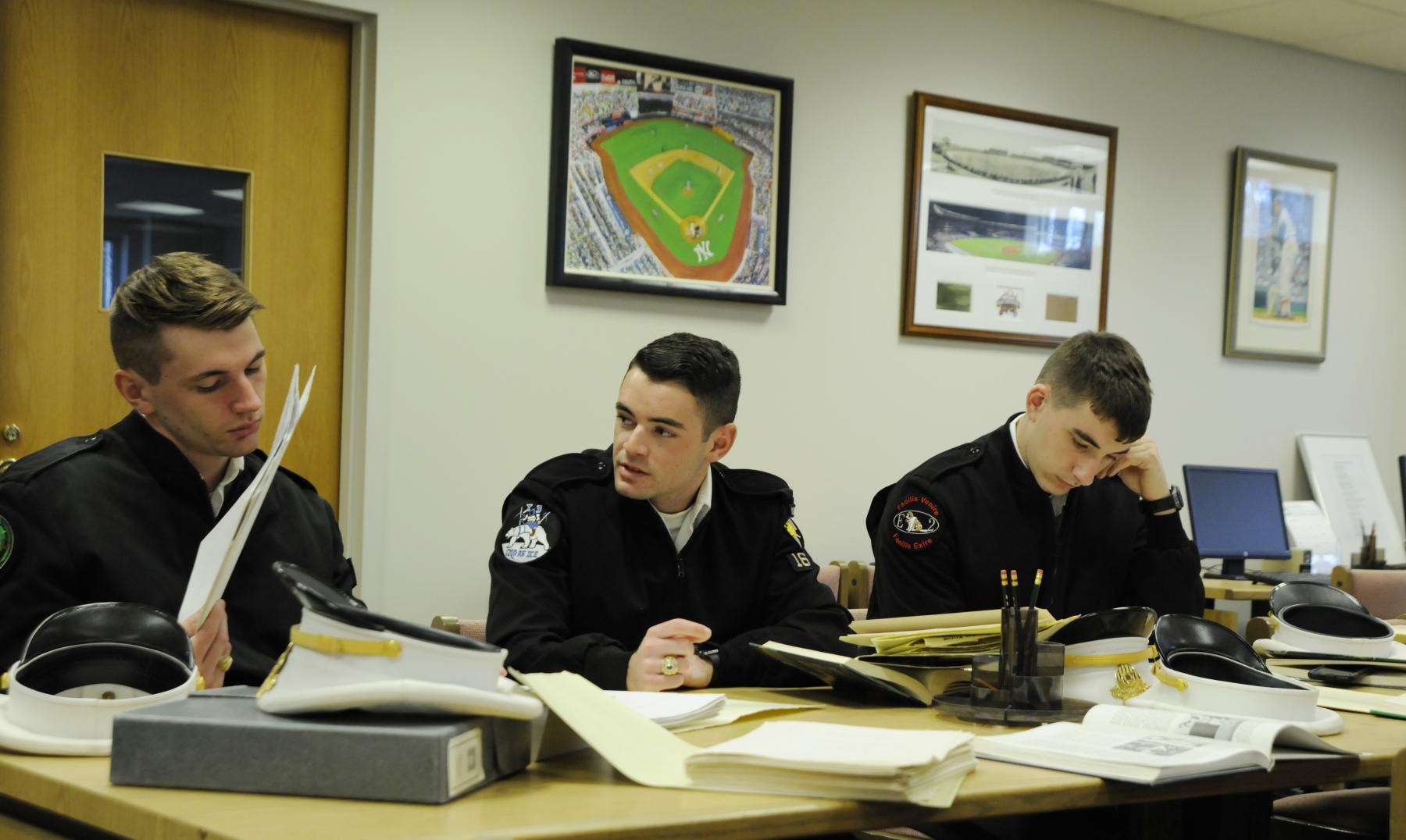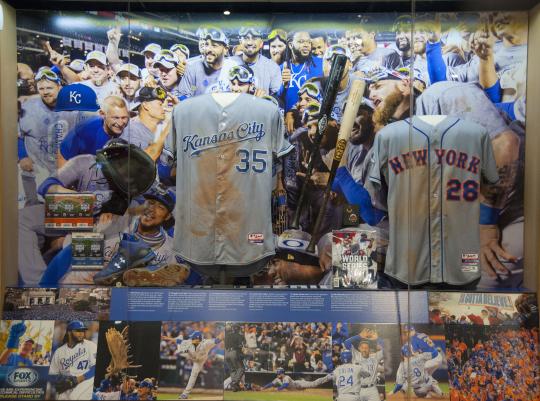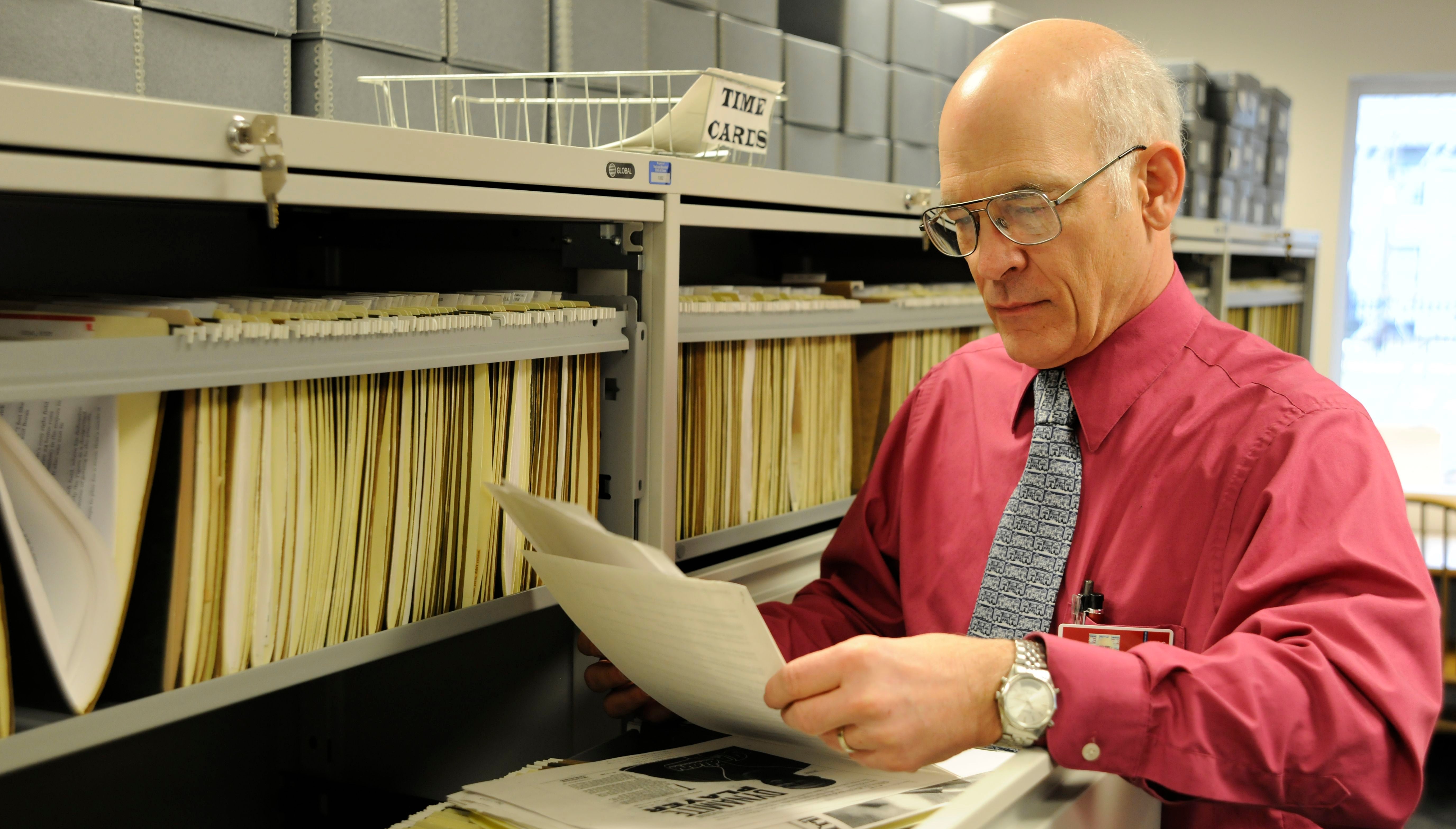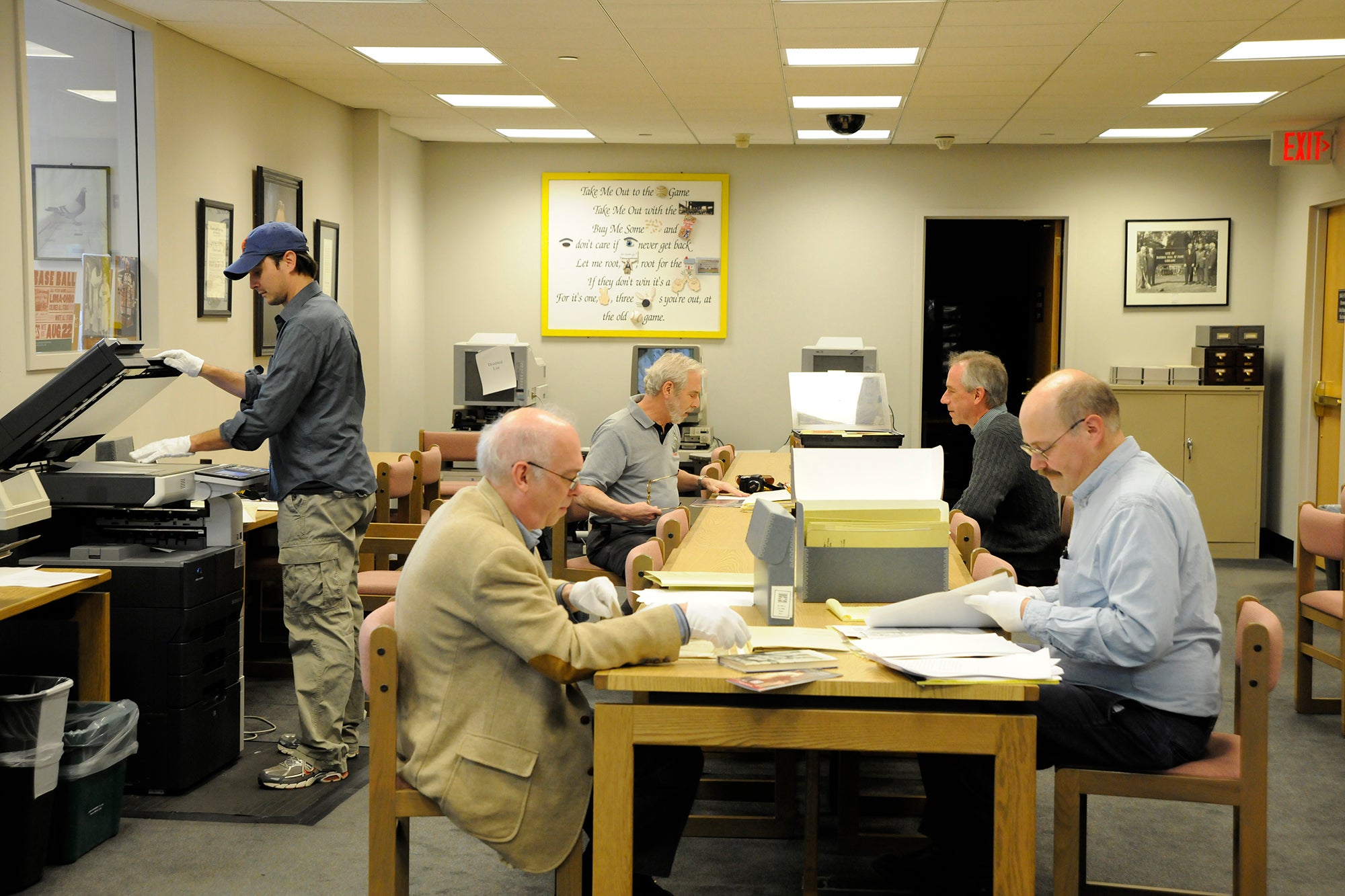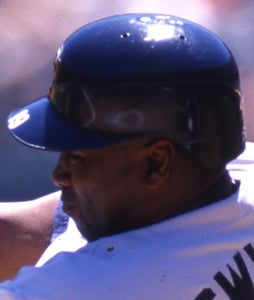I was actually kind of surprised that I made it two-and-a-half years into my time at the military academy before I visited Cooperstown, because I always wanted to come. I went straight to the current World Series exhibit.”
- Home
- Our Stories
- Cadets by the Numbers
Cadets by the Numbers
West Point students visit Museum as part of sabermetrics class
< /br>
West Point’s Doubleday Field may feel like a world away from Cooperstown’s Doubleday Field, but at the end of the day, the two historic facilities focus on a singular topic: Baseball.
From the Black Knight’s baseball field in West Point to the famous diamond in Cooperstown, the sport traverses many aspects of society and culture, and the intricacies of baseball statistics and statistical analysis, also known as sabermetrics, appeal to a broad spectrum of fans.
You can count West Point cadets among them.
On Wednesday, March 30, cadets in the U.S. Military Academy’s two sabermetrics classes, led by their instructor, Major Ashlie Christian, and the program director for the USMA’s math and operations research programs, Colonel Doug McInvale, visited the Baseball Hall of Fame Library in Cooperstown. For the cadets, it was an opportunity to visit and perform research that is fun and meaningful.
“This is part field trip and part research trip,” Col. McInvale described. “Thanks to the research librarians [in Cooperstown] that prepare in advance the topical sources that are consistent with the research topic … [the cadets] get to spend much of their day with primary sources and other research documents to further their research that will become their final course project in sabermetrics this year.”
Hall of Fame Membership
There is no simpler, and more essential, way to demonstrate your support than to sign on as a Museum Member.
The sabermetrics class was “a special topics course for about six years, and then we realized its value as sports analytics has grown as a discipline as has its interest level with the cadets,” according to McInvale. “So we made it a full course that we offer once a year, every spring, and that includes a field trip to Cooperstown.”
Major Christian, herself a graduate of the Academy, where she pitched four years for the softball team and served as team captain for two years, took over teaching the course from Father Gabriel Costa, who developed the course while at Seton Hall University and has published books and other works on sabermetrics. Costa’s early sabermetrics classes were not heavily attended, according to Maj. Christian, who was one of six students when she took the class over 10 years ago, but “now it’s evolved to 40 students in multiple sections. It’s just a fun way to apply statistics and give them an elective. So even though we’re a military academy, we can have some fun courses too,” she said.
For Maj. Christian, taking over the sabermetrics course from a former professor was not what she expected to do when she graduated from the academy, but she has enjoyed it.
“I never thought I’d come back as a teacher,” said Maj. Christian, who spent 16 months in Iraq as a Blackhawk helicopter pilot. “I was a law major, but I enjoyed my math classes, and my sponsor was Col. (Michael) Huber. He actually co-taught this class with Father Costa, and he was a math teacher and pushed me to look at coming back. I always enjoyed my math classes, so I applied and got accepted to come back, and I’ve loved it.
“My first year, I did not teach sabermetrics, and then I mentioned it to Father Costa, and he said, ‘Oh great! Here, take it and run!’ So it’s been great.”
She estimates that about 80 percent of this semester’s students are die-hard baseball fans, but “they’re learning about the game and learning about the statistical side of it. It’s a chance to get them to see what we’ve been talking about in class, as far as the history of the game. Plus, we do a final project that they have to research, and this library has such a wealth of knowledge for baseball stuff,” Maj. Christian said. “It’s been interesting. They come up with a lot of different ideas. It’s very creative, which is neat, and that’s the intent of it.”
Among the topics that the cadets explored during their visit, which also included tours of the exhibits led by the Hall of Fame’s teaching staff, are: Using Ted Williams’ career to study the equivalence coefficient; comparing home runs and other statistics across different generations of ballplayers; the probability of positive or negative consequences for a team following a manager’s ejection; and player performance as determined by salary, impending free agency, or injury recovery.
One cadet’s interest in sabermetrics even surprised Maj. Christian.
Cadet Jack Martin, a junior from Chanute, Kan., which is about a two-hour drive southwest from Kansas City, developed a spreadsheet to track some of his research concerning some of the game’s greatest hitters.
“In that particular spreadsheet, I was looking at batting averages, subtracting singles or extra-base hits,” Martin explained. “So, you look at someone like Tony Gwynn, and his batting average without singles is very low, and someone like Pete Rose has the same thing.
“But if you look at someone like Mark McGwire or Barry Bonds or Hank Aaron, who hit a lot of extra-base hits, and you look at their batting average without singles, it’s still pretty high. It’s interesting, and I am always trying to come to [Maj. Christian] with new stats that I’ve tried to come up with and see if there is any relevance to them. A lot of the time there’s not, but she thought that was pretty interesting.”
Martin, a Royals fan, said his trip to Cooperstown was a long-awaited visit.
“I was actually kind of surprised that I made it two-and-a -half years into my time at the military academy before I visited Cooperstown, because I always wanted to come,” he mentioned. “I went straight to the current World Series exhibit.”
Martin’s research topic, which he is exploring along with a fellow cadet, is on the influence of stolen bases across baseball and whether there is any correlation between stolen bases and winning or attendance.
“I feel like it’s an undervalued aspect of baseball and … teams that can utilize stolen bases like the Royals did this past year can really take advantage of that get some more wins,” Martin noted.
For Maj. Christian, an Idaho native who is a Yankees fan and counts the Angels’ Mike Trout among her favorite players, and Col. McInvale, who grew up a Braves fan in Alabama, there are larger and more important lessons to be learned in a sabermetrics class. Those lessons will be integral as the cadets graduate and begin careers as Army officers.
“One, it teaches them how to analyze contemporary issues. In today’s complex and ever-changing battlefield environment, the dynamic with contemporary issues and understanding how to analyze those is important,” Col. McInvale explained. “Second, it gives them some mathematical rigor. … It gives them the ability to perform statistical analysis in a way that will give them the ability to do that in other ways in an Army career.”
Maj. Christian added that some cadets “are doing research in their thesis areas, but for most of them, this is an elective, so some of them are not even math majors. The idea of doing research outside of your normal area. Looking at different ideas, coming up with research projects. Math can be applied to anything.”
She also noted that the students are being tested on their problem-solving ability.
“Even just coming up with their own problem,” she said. “They’re getting a lot of independence in this class and letting them come up with things and trying to shape their own research questions.”
The future of analytics and sabermetrics is unlimited, as various individuals continue to delve into the numbers of baseball, as well as those of other sports. Col. McInvale credits Father Costa, who “is possibly the world’s number one Babe Ruth fan,” for spawning the “sports analytics arm of our department, which has broadened beyond even baseball and has produced faculty who’ve gone on to do sports analytics for other sports.” It has created similar professional opportunities for them, as well.
What is the future of sports analytics at West Point?
“As the interest for cadet education goes and the need for it to be something that will prepare them to be future officers in the Army and for our nation,” Col. McInvale explained. “Certainly a broader set of sports analytics tools may be need, and we look forward to growing in that area as the opportunities present themselves.
“[Father Costa and Maj. Christian] have done great work connecting this opportunity for West Point and our math department to partner with the Baseball Hall of Fame, and it’s a great partnership that we appreciate very much.”
Matt Rothenberg is the manager of the Giamatti Research Center at the National Baseball Hall of Fame and Museum


